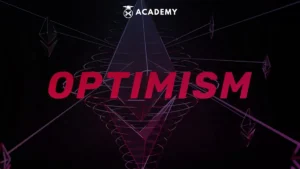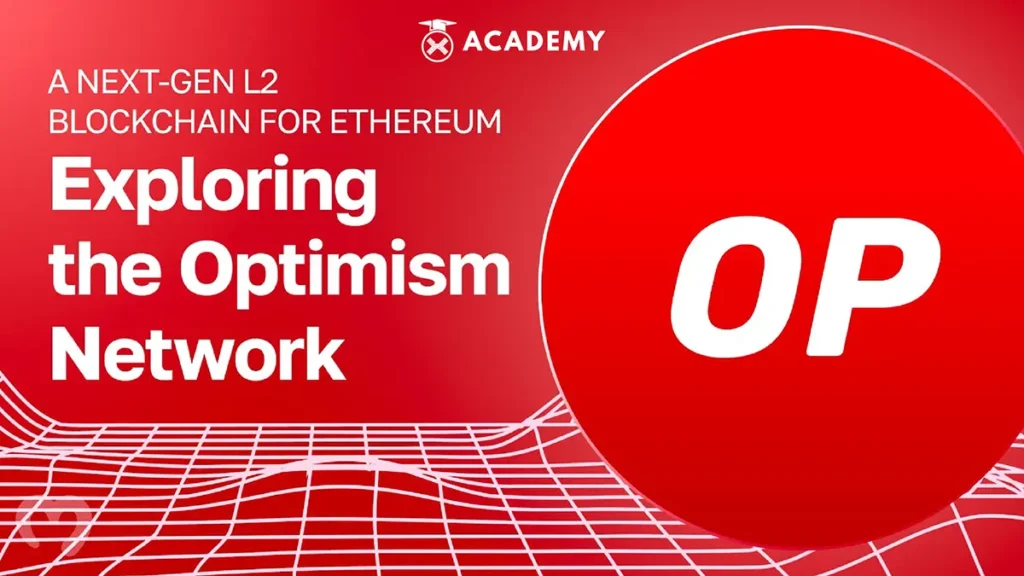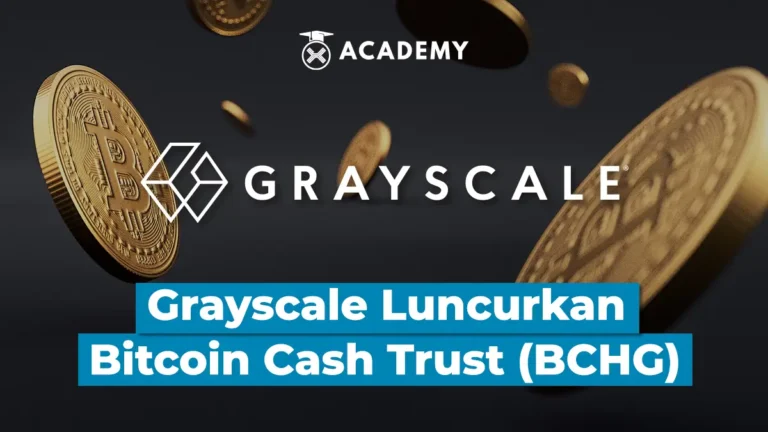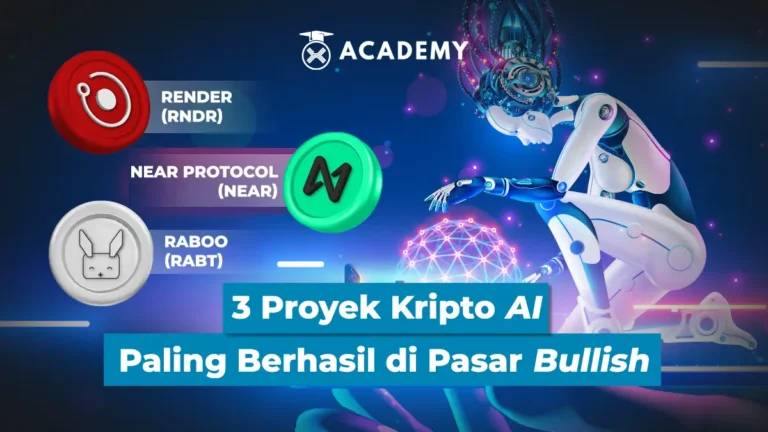The largest blockchain ecosystem currently, namely Ethereum, has problems with high levels of scalability. In response to this, many development teams are currently trying to design technology that can overcome this. One of them is optimism as a layer-2 network.
Optimism, or what is often referred to as Optimistic Rollup, is an approach in the world of blockchain technology that aims to increase the scalability, efficiency, and performance of the blockchain network.
The optimism concept focuses on how to overcome the limitations that exist in blockchain technology, especially in terms of throughput (number of transactions per second) and high transaction fees. This is achieved through the integration of Layer 2 solutions.
Meanwhile, Layer 2 is a term used to describe the second layer or protocol above the main blockchain, which is also called Layer 1.
Layer 2 aims to address several key issues in blockchain technology, including scalability and high costs. Layer 2 is very important in the blockchain context for several reasons, including scalability, cost efficiency, transaction speed, and energy efficiency.
So, to better understand what Optimism is, Optimistic Rollups technology, how Optimism works, Optimism Collective, and the Optimism ecosystem and risks, see the full review below.
What is Optimism?

Optimism is a layer-2 platform built on top of layer-1 infrastructure (Ethereum). As a layer-2 solution, Optimism is designed to address the scalability challenges faced by Ethereum.
In other words, optimism aims to speed up the transaction process on the Ethereum network and lower its transaction costs.
Currently, Ethereum has a transaction speed limit of around 15 transactions per second (TPS). On the other hand, optimism provides a transaction validation process that can reach 2,000–4,000 TPS. This advantage can be attributed to the optimistic rollup technology adopted by Optimism.
Through Optimism, users can access dApps in the Ethereum ecosystem with more economical transaction fees and shorter processing times, resulting in a more satisfying experience.
Optimism ranks second as the largest Ethereum layer-2 project based on Total Value Locked (TVL), with $524.61 million US dollars at the time of writing, based on data from Defi Llama. The top position is occupied by Arbitrum, with TVL reaching $1.02 billion US dollars.
Optimism was founded in June 2019 by Jinglan Wang, Karl Floersch, and Kevin Ho in California, United States. In March 2022, Optimism managed to raise $150 million in Series B funding from major investors such as Andreessen Horowitz and Paradigm.
Currently, after successfully running a successful migration trial on the Goerli testnet, Optimism is in the preparation stage to release an update called Bedrock, which is planned to be rolled out in the first quarter of 2023.
Some of the changes that will be introduced by Bedrock include reducing the time needed to make a deposit from layer-1 to layer-2 up to four times faster, reducing the cost of sending data to layer-1 by 20%, and providing support for implementing various alternative proof systems, including Zero Knowledge.
Get to know Optimistic Rollups Technology
Optimism relies on a transaction processing technique known as Optimistic Rollups. However, what is the actual mechanism? Essentially, optimism combines a number of transactions on the Ethereum network into one single transaction pool. This transaction package is then recorded on the Optimism network. This proof of transaction is then “returned” to the Ethereum network.
This system has dual benefits: first, it reduces the number of transactions and reduces fees on the Ethereum network, and second, it creates more efficient transaction fees within the Optimism network.
This happens because optimism combines a number of transactions into one group so that transaction costs can be divided equally among all transactions in that group.
Furthermore, this system is called Optimistic Rollups because, during the processing of groups of transactions on the Optimism network, these transactions are “optimistically” assumed to be valid until proven otherwise.
This assumption helps save transaction time because each individual transaction does not need to confirm its validity separately but rather collectively with its group.
However, the question is how do we check the authenticity of transactions if everything is assumed to be valid in optimism?
To answer this, validators on the Optimism network carry out checks for one week for each group of transactions if there are suspicions of suspicious transaction data.
During this period, each validator has the right to submit fraud claims (fraud proof) by referring to data that already exists on the Optimism network.
No less interesting, the Optimism network is only responsible for executing transactions, while transaction validation and security remain the responsibility of the Ethereum network.
Therefore, the presence of the Optimism network does not compromise the transaction security aspects and decentralization principles that are at the core of the Ethereum network.
How Optimism Works
Optimism operates using technology known as optimistic rollups, a layer-2 approach built on top of existing blockchain infrastructure, specifically Ethereum.
Optimistic roll-ups work by collecting a number of transactions into one package, which is then “rolled up” into one single transaction for processing.
The name “rollups” comes from this step. This combined data is then processed on the Optimism blockchain. Once the process is complete, all the final transaction data is returned to the Ethereum blockchain as a new block to be validated.
By combining multiple transactions into one transaction bundle, the fees required for each transaction become more affordable. This is caused by the distribution of gas fees to all transaction owners, not just one party.
Implementation of rollup technology is claimed to result in cost savings of up to 100 times compared to layer-1 protocols.
Currently, every block formed in Optimism is stored in the Canonical Transaction Chain (CTC), a special smart contract on Ethereum.
CTC is equipped with code that ensures that the existing block list cannot be changed by new Ethereum transactions.
Through this technology, Optimism can maintain and implement the security and decentralization aspects that are characteristic of Ethereum.
Each block in Optimism is created by an entity known as a “sequencer”. Initially, the sequencer will confirm the transaction, then create a block in Optimism Layer 2.
These blocks are called rollups, which are collections of Ethereum transactions. After that, the sequencer will execute the block by compressing it to reduce the transaction size. Once completed, the transaction data is then sent back to Ethereum.
Get to know the Optimism Collective
Optimism management is carried out through two main entities, namely the Optimism Foundation and the Optimism Collective. Optimism Collective has a bicameral organizational structure that evenly divides management responsibilities.
In this framework, there are two Decentralized Autonomous Organizations (DAO) that play a role in the Optimism Collective, namely Token House and Citizens’ House.
Although both have different roles, they both have a common goal, namely optimizing financial results while still producing a positive impact.
To become a member of the Token House or Citizens’ House, someone must hold the native token from Optimism, namely the OP token. Joining Token House gives you the right to participate in technical decisions regarding Optimism developments, such as software updates and project incentives.
However, only a number of top OP holders are selected to be part of the Citizens’ House. Citizens’ House members are responsible for distributing revenue earned for public purposes that support the operation of the optimism ecosystem.
In the Optimism Collective, Token House members can propose changes to the Optimism protocol through various predefined proposal types.
There are six main types of proposals that can be submitted by Token House members, namely the Governance Fund, Protocol Upgrade, Inflation Adjustment, Director Removal, Treasury Appropriations, and Rights Protections.
Each proposal will undergo a discussion and input-gathering stage before going through a voting process to determine the final result.
Optimism Ecosystem

As one of the layers with the largest Total Value Locked (TVL), Optimism hosts various protocols in its ecosystem. The majority of protocols operating on Optimism are in the DeFi space, primarily due to the benefit of low transaction fees on the Optimism network.
According to data from DeFiLlama, Synthetix is the largest active protocol on Optimism, with a TVL of $112.08 million US dollars.
Followed by Velodrome and AAVE V3, which ranked second and third, respectively, with TVL of $101.64 million US dollars and $85.08 million US dollars.
As of the end of January 2023, there are approximately 70 protocols active within Optimism with a TVL of at least $10,000 US dollars or more.
Risk of Optimism
In the race to overcome scalability issues and high transaction costs on the Ethereum blockchain network, Optimism must compete with other blockchains, which also offer similar solutions. One of its main competitors today is Arbitrum, which has also adopted rollup technology.
From a Total Value Locked (TVL) perspective, Arbitrum currently leads with a TVL of $1.2 billion US dollars and a market share of 63%.
Additionally, in terms of transaction fees, Arbitrum offers lower rates than Optimism. For example, the fees for sending ETH and exchanging assets (DEX Swap) on Arbitrum are only around 4 cents and 12 cents, respectively.
Meanwhile, at Optimism, fees for the same transaction reach 12 cents and 18 cents, respectively. Competition between the two is increasingly intense in an effort to become layer-2 with the best rollup technology.
In addition to competing with similar technology, optimism also has to compete with zero-knowledge (ZK) technology. During 2022, ZK technology has experienced significant developments.
As we enter 2023, this technology will be tested to see its potential and successful implementation. If ZK technology is able to match, or even surpass, the speed and transaction cost efficiency of Optimism’s rollup technology, then this could be a risk for Optimism.
Additionally, like many other crypto assets, OP tokens have a high level of volatility. Therefore, it is very important to do your own research and carefully consider the benefits and risks associated with owning OP tokens before purchasing them.
Conclusion
In conclusion, optimism is an approach that aims to improve the scalability, efficiency, and performance of blockchain networks by leveraging Layer 2 solutions.
Layer 2 is a layer above the main blockchain (Layer 1), which helps overcome the problems of scalability, high transaction costs, and low speed by carrying out most operations outside the main blockchain.
Optimism itself functions as a type of Layer 2 solution that applies Optimistic Rollup principles, namely processing transactions in the second layer and only completing transactions on the main blockchain when necessary.
It is important to understand that the evolution of the blockchain ecosystem is a reality, and this technology continues to evolve to provide better solutions in various industries.
In addition, Optimism Collective is a community focused on the development and adoption of Optimistic Rollup technology which plays an important role in shaping the future of the blockchain ecosystem.
On the other hand, there are also risks to be aware of, including smart contract security, regulatory compliance, and scalability issues. Stakeholders must pay attention to and address these risks proactively.
Ultimately, the importance of the Optimism ecosystem lies in its potential to overcome the problems inherent in blockchain technology, such as high fees, slow confirmation times, and the inability to manage large transaction loads.
As additional information, still related to Ethereum, you can also read other related articles such as zksync ethereum scalability solution only at INDODAX Academy.
Are you interested in investing in Ethereum assets?
Now you understand what Optimism is, Optimistic Rollups technology, how Optimism works, Optimism Collective, and the Optimism ecosystem and risks.
So, now is the time to start investing in crypto in Ethereum assets on INDODAX. You can buy this crypto asset for your investment, but it’s a good idea to first check today’s ethereum price on the Indodax Market.
To invest in INDODAX, first you need to download the Indodax application, then register and log in to your Indodax account.
Next, you can verify your account before you can make a deposit and start crypto trading on INDODAX.
After the account is verified, the next step is to deposit funds into your INDODAX account and choose the crypto you want to trade, namely Ethereum.
After you choose the crypto to trade, you can immediately open a trade by determining the buy or sell price according to your preferences or using the current market price.
Very easy, right? Come on, start investing in the crypto world immediately only at INDODAX!








